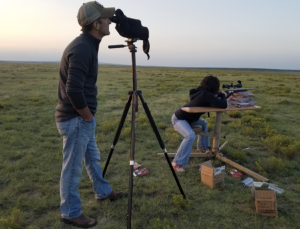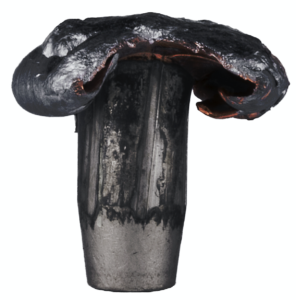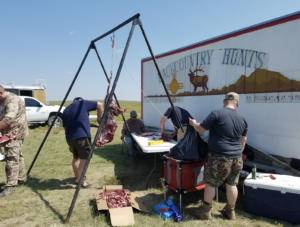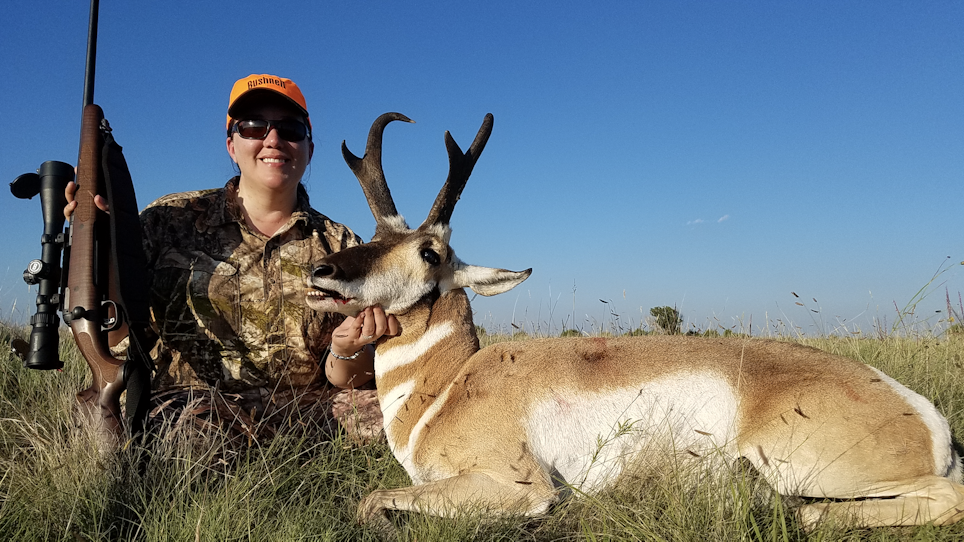Somewhere in the northern New Mexico prairie, in the middle of a sprawling, flat stretch of grass mixed with sage and desert foliage, Steve Jones pitches a series of teepees, sets up a cook tent and guides hunting trips out of this portable base camp every year. Last season, I hunted pronghorn there as a guest of Vista Outdoor, testing out gear from Bushnell, Federal Premium, Savage and more.
Having grown up in the woods of Pennsylvania and now residing in Alabama, I am accustomed to hunting in tight places — like thick hardwoods where shot distances tend to be 75 yards and under. The New Mexico prairie’s vast expanses were a new ball game for me, and I quickly learned that not all gear is up to the challenge of wideopen spaces. If you sell to customers who hunt prairies and other sprawling terrain, where shots might come quickly and unexpectedly and might be farther out, you’ll want to know what to stock to help your customers succeed afield.

Offering hunters and shooting enthusiasts optics, accessories and other items to use in the field is a great way to build long-lasting relationships between them and your business. (Photo: HIlary Dyer)
Optics
Much of prairie hunting is spot-and-stalk, which means hunters will spend a lot of time behind glass, searching for animals and evaluating what they find to determine if a certain animal is worth getting a closer look at. Good optics are a must — but that doesn’t have to translate to expensive glass. A $50 pair of binos will usually get the job done over a 100-yard greenfield, and there will always be customers looking to buy in this price range. Show them a pair that costs $300, $800 or $2,000, and they’re going to ask you exactly what all that extra cash is buying them over their bargain brand. The answer?

Good optics are a must — but that doesn’t have to translate to expensive glass. Find out what your customer will be using the binocular or spotting scope for, the conditions, their hunting or shooting plans, and then offer several options (Photo: Hilary Dyer)
“You’ll gain low-light performance, stretching your hunting hours,” says Bushnell’s Jake Edson. “You’ll gain color-resolution, making it easier to spot game.” That’s a crucial distinction, because as all hunters know, many of your best opportunities come in the low light of early morning and around sunset.
“What makes a more expensive optic even more important out West is the amount of time you spend glassing,” Edson said. “With better clarity, definition and resolution, you will have less eye strain, allowing you to spend more time in the glass and spotting game.”
On the antelope hunt, I tried out Bushnell’s Engage binoculars and found them crisp, comfortable and an overall great value. The entire Engage line features Bushnell’s exclusive EXO Barrier lens coating — it repels water, debris, oil and fog, making the optics more effective in any weather, including those legendary prairie storms and dry Western dust. ED Prime glass ensures razor-sharp images for picking out distant animals. They come in a range of models from 8x42 all the way up to 12x50 for maximum light and the highest magnification.
The Engage binos fall in the $350 range (MSRP). Quality optics in this price range are just a couple of steps up for the $50 bino customer, and won’t require you to pitch anyone on the idea of dropping a mortgage payment on new glass.
Bushnell’s G-Force DX rangefinder proved useful on the antelope hunt as well. It will give you not only the yardage to the target, but also the holdover for your caliber and the angle of the shot. It’s made to work with the Engage riflescopes — if the rangefinder reads “+3,” just go up three hashmarks in the scope and you’ll be dead-on. It’s a slick system that works well, but it might require a little demonstration to customers in-store in order to sell them on it.
Guns and Ammo
Customers who hunt wide-open spaces are going to want the ability to take longer shots, whether they actually ever do or not.
Just about any rifle in an appropriate caliber is capable of taking shots past 200 or 300 yards and beyond. What customers will want in a Western-capable gun is accuracy and comfort. That means they want a gun that fits them well and that carries nicely without being too heavy for all-day spot-and-stalk hunting. Off-the-shelf rifles are generally built to fit the average male — someone who is in the neighborhood of 6 feet tall and 180 to 200 pounds. Anyone who falls much outside those parameters — especially with regard to height — will benefit greatly from either a proper fitting or a gun that’s made with different specs.

Federal’s Edge TLR is engineered with a polymer tip that initiates expansion at long range, so you get great performance even at lower velocities. It offers an extremely high B.C. and match-grade accuracy. (Photo: Hilary Dyer)
I’m 5 feet 4 inches tall, so off-the-shelf guns are typically a bit too long for me and often need a bit of cast off as well, particularly when I shoot them from prone. On the pronghorn hunt, I carried a Savage Lady Hunter, which turned out to be an ideal gun for stalking the plains. It’s got a 12.5-inch length of pull and a Monte Carlo stock that better fits a woman’s cheekbones and our proportionately longer (compared to men) necks. And at 6 pounds, it was a breeze to carry on the 1,500-yard uphill stalk that eventually got me my antelope.
If you don’t offer stock fitting in your shop, consider it. An inch or two of length-of-pull and a few centimeters of cast or pitch adjustment can make world of difference in comfort and fit.
Now, about calibers. Customers will want a caliber that offers them uniform velocity, superior accuracy, and a high ballistic coefficient. What sells? Well, as you might expect, the classics never go out of style. “While the big magnums — 7mm Rem. Mag and 300 Win. Mag especially — are popular, the old standby .308, .30-06 and .270 Win. still account for most sales,” says Federal’s Jared Hinton. “6.5 Creedmoor is gaining popularity every day, and that growth doesn’t show signs of decreasing any time soon.”
That won’t be a surprise to any retailers, who have seen this caliber explode in sales volume among both hunters and long-range target shooters. In fact, I used a 6.5 Creedmoor on my pronghorn.
When it comes to the specifics of ammo, what are customers looking for? Because every rifle likes something different, you should stock a variety of options and brands. But accuracy, and in turn, uniform velocity, is paramount. Hunters will want a bullet that expands but holds together and offers great penetration. Federal’s Edge TLR is a great example — it’s engineered with a polymer tip that initiates expansion at long range, so you get great performance even at lower velocities. It offers an extremely high B.C. and match-grade accuracy.
“Deadly terminal performance has to penetrate straight through its target and transfer energy along the way. But, lethal expansion doesn’t always look the same at every range,” says Hinton. “A large expanded diameter is not always required for a bullet to make a clean kill. Edge TLR bullets accomplish terminal performance not through sheer expansion but by opening the nose consistently and creating a uniform frontal surface. From the muzzle all the way out to 1,350 feet per second, Edge TLR gives frontal expansion. This bullet transfers its energy into the animal and carves straight, lethal wound channels that bring down big game at any range.”
I personally used Federal’s Trophy Copper on my pronghorn and was very pleased with the results — though that stalk ended up putting me relatively close, and my shot was only 125 yards.

If you have a good base of hunters, consider offering processing equipment that will work for their traveling needs. That can include knives, bags and coolers, none of which have to be terribly expensive but they need to be of good quality. (Photo: Hilary Dyer)
Other Gear
What else might you want to stock? Spot-and-stalk hunters are likely to want shooting sticks —such as Primos’ handy Trigger Stick — or other bipods or monopods, to steady their rifle (for shooting) or their optics (for glassing) or both. If your customers hunt at altitude, they’ll need hydration options. Hydration bladders, easily filled reusable water bottles and even simple water purification options are a smart idea for add-on sales.
If you’re located in an area where many hunters are operating out of a base camp, you have an opportunity to sell them all manner of camping gear — from packs to camp stoves to cooking gear. At our teepee base camp in New Mexico, we spent the week cooking on a Camp Chef outdoor stove, which turned out to be remarkably versatile with a little imagination on the cook’s part. Propane water heaters, while certainly not found in every hunter’s camp, provide really nice options for cleaning up camp, meat and the hunters themselves. You could fill your entire store with camping gear if you’re not careful, so choose wisely, but it’s smart to at least stock the basics.
Don’t forget about meat care. Hunters in the wide-open spaces might be hours or days away from home. They’ll need knives and sharpeners and some other basic field-butchering tools. Meat bags will probably sell, too, and for base-camp hunters, a quality cooler that will keep meat for several days is a must. In antelope camp, we had the luxury of a generator-powered walk-in cooler to hang animals overnight.
Seven hunters tagged out on the first day. We spent most of the next day caping, butchering, wrapping and labeling seven antelope for easy transport home. My antelope meat spent well over 24 hours in a hard-sided Camp Chef cooler, surviving two flights home to Alabama without so much as losing its chill. Consider stocking some quality coolers in a range of prices for hunters who will need them.
Hunters who stalk their quarry on the wide-open Western spaces have different gear needs than those who hunt in tighter, thicker terrain. Consider stocking some specialty items to meet their needs, and consider marketing your gear as Western-friendly to appeal to customers who are headed out on that trip of a lifetime.






